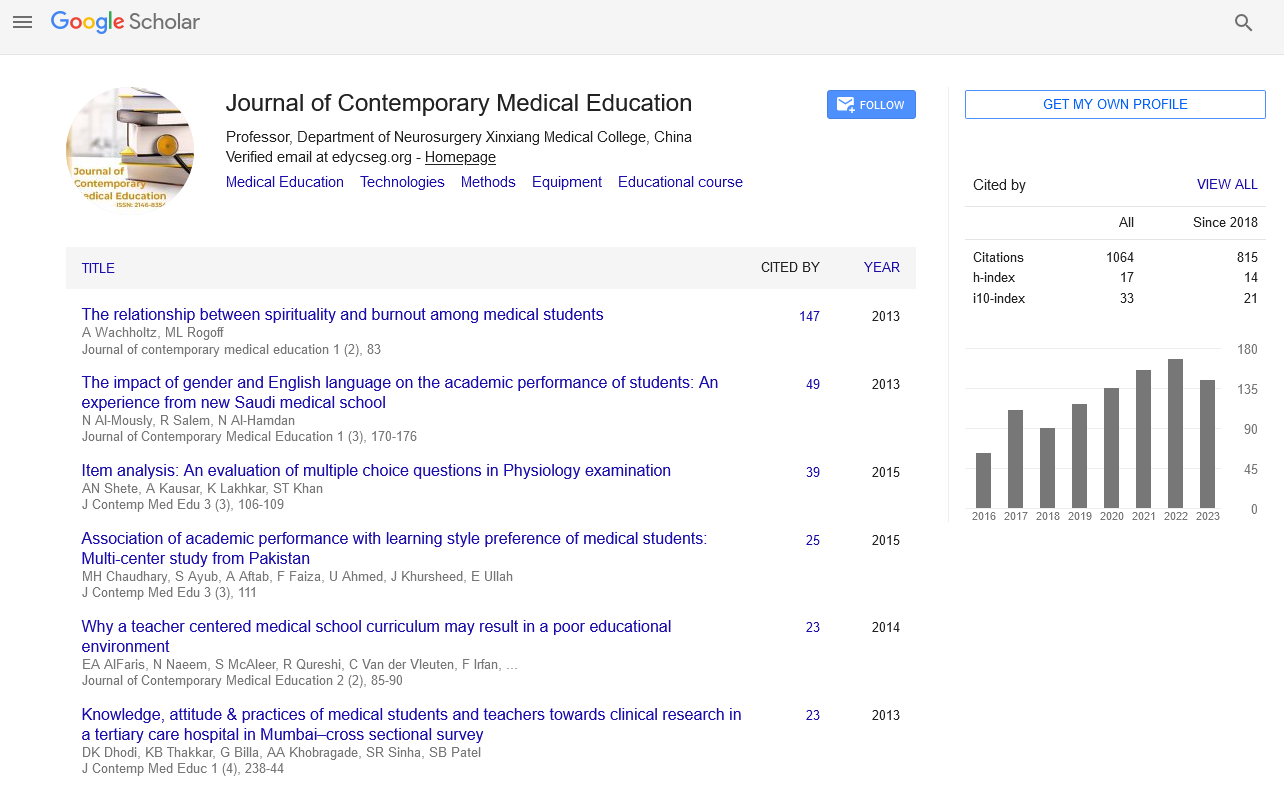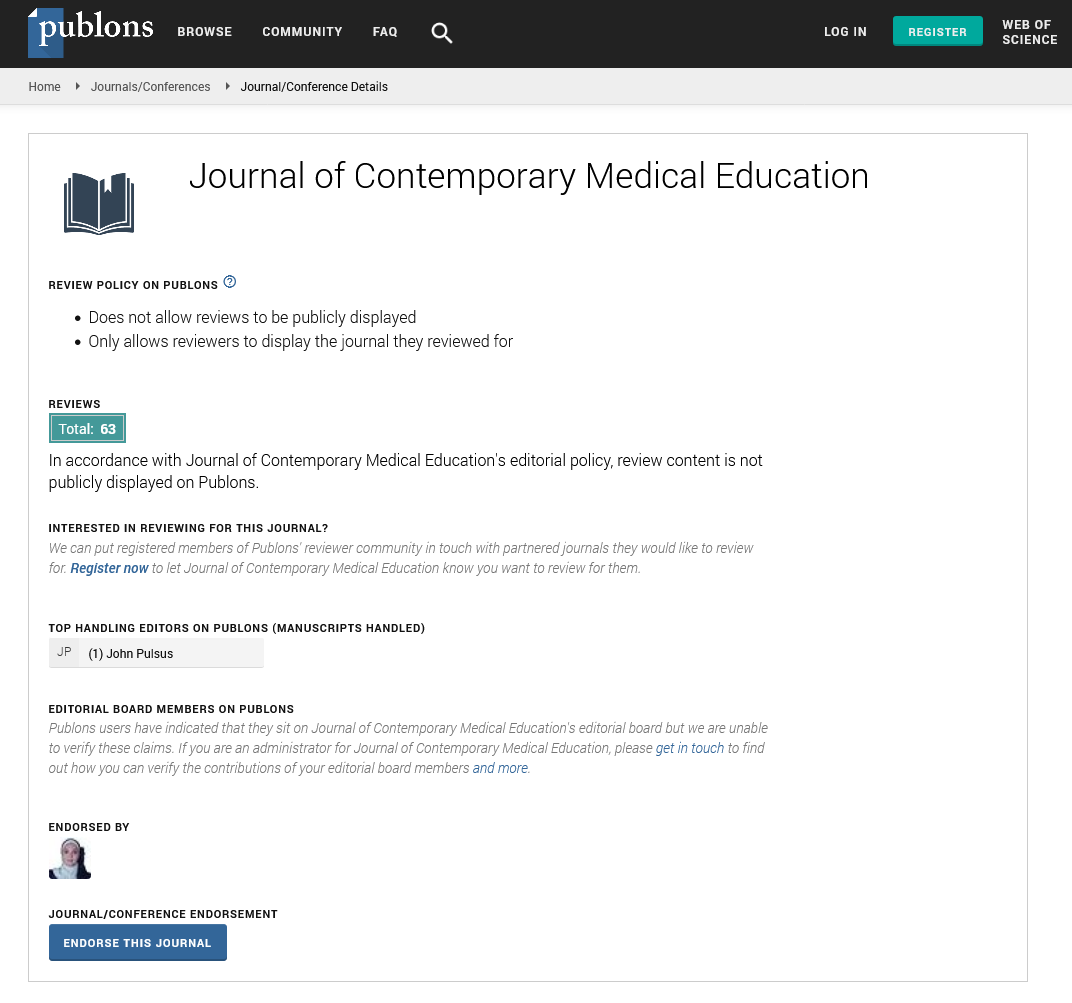Opinion Article - Journal of Contemporary Medical Education (2022)
A Brief Note on Structure of the Human Heart
Rakesh Arora*Rakesh Arora, Department of Surgery, University of Manitoba, Manitoba, Canada, Email: arorarakesh@gmail.com
Received: 03-Mar-2022, Manuscript No. JCMEDU-22-56340; Editor assigned: 05-Mar-2022, Pre QC No. JCMEDU-22-56340 (PQ); Reviewed: 19-Mar-2022, QC No. JCMEDU-22-56340; Revised: 24-Mar-2022, Manuscript No. JCMEDU-22-56340 (R); Published: 31-Mar-2022
Description
The heart is a muscular organ that pumps blood via the circulatory system’s blood arteries. The pumping blood transports oxygen and nutrients to the body, as well as metabolic waste like carbon dioxide, to the lungs. The heart in humans is about the size of a closed fist and is placed in the middle compartment of the chest, between the lungs.
The heart is made up of three layers. They are the following:
Epicardium
The outermost layer of the heart is a thin membrane called the epicardium.
Myocardium
The muscle that contracts to pump and propel blood through the body’s tissues makes up this thick layer.
Endocardium
The innermost layer is smooth and thin.
Two atria and two ventricles make up the heart’s four chambers. A complicated network of veins and arteries transports blood throughout the body. The human heart weighs between 6 and 11 ounces on average. Every day, the muscle can pump up to 2,000 gallons of blood through one’s body, which is equivalent to a fire department’s tanker truck. The average person’s heart beats between 60 and 90 times per minute, depending on their cardiovascular condition and degree of activity. People with higher levels of physical fitness had lower resting heart rates. Hormones released in response to emotions and other stimuli alter heart rate, which is why the heart has long been linked to emotions.
The four main functions of the heart are getting oxygenated blood to other parts of the body. Hormones and other important compounds are pumped to various regions of the body. Receiving deoxygenated blood and pumping it to the lungs for oxygenation, as well as transporting metabolic waste products from the body.
Structure of the human heart
The heart is a muscular organ in the chest that is located directly behind and to the left of the breastbone. It’s about the same size as a closed fist. The heart is constantly pumping blood through the arteries and veins, which are a network of blood vessels. The cardiovascular system includes the heart and its blood arteries. The heart is divided into four chambers. The atria are the upper two chambers of the heart, while the ventricles are the lower two chambers. The right heart is made up of the right atrium and right ventricle, while the left heart is made up of the left atrium and left ventricle. The heart’s distinct chambers are separated by septums, which are small barriers. The right atrium collects and pumps deoxygenated blood from the body to the right ventricle. The right ventricle receives blood from the right atrium and pumps it to the lungs, where oxygen is added. The left atrium receives and pumps oxygenated blood from the lungs to the left ventricle. The left ventricle is the heart’s most powerful chamber. It transports oxygen- rich blood throughout the body. The four valves in the heart control the flow of blood into the heart, within the heart chambers, and out of the heart. The coronary arteries, which run along the heart’s surface, provide nutrition and oxygen to the heart. It’s also well-supplied by a web of nerve tissue that keeps the heartbeat rhythmic. The pericardium is a fluid-filled sac that surrounds the heart. The pericardium is a protective layer that produces fluid to lubricate the heart and reduce friction between the heart and the organs around it.
Copyright: © 2022 The Authors. This is an open access article under the terms of the Creative Commons Attribution NonCommercial ShareAlike 4.0 (https://creativecommons.org/licenses/by-nc-sa/4.0/). This is an open access article distributed under the terms of the Creative Commons Attribution License, which permits unrestricted use, distribution, and reproduction in any medium, provided the original work is properly cited.







